-
 Bitcoin
Bitcoin $106,754.6083
1.33% -
 Ethereum
Ethereum $2,625.8249
3.80% -
 Tether USDt
Tether USDt $1.0001
-0.03% -
 XRP
XRP $2.1891
1.67% -
 BNB
BNB $654.5220
0.66% -
 Solana
Solana $156.9428
7.28% -
 USDC
USDC $0.9998
0.00% -
 Dogecoin
Dogecoin $0.1780
1.14% -
 TRON
TRON $0.2706
-0.16% -
 Cardano
Cardano $0.6470
2.77% -
 Hyperliquid
Hyperliquid $44.6467
10.24% -
 Sui
Sui $3.1128
3.86% -
 Bitcoin Cash
Bitcoin Cash $455.7646
3.00% -
 Chainlink
Chainlink $13.6858
4.08% -
 UNUS SED LEO
UNUS SED LEO $9.2682
0.21% -
 Avalanche
Avalanche $19.7433
3.79% -
 Stellar
Stellar $0.2616
1.64% -
 Toncoin
Toncoin $3.0222
2.19% -
 Shiba Inu
Shiba Inu $0.0...01220
1.49% -
 Hedera
Hedera $0.1580
2.75% -
 Litecoin
Litecoin $87.4964
2.29% -
 Polkadot
Polkadot $3.8958
3.05% -
 Ethena USDe
Ethena USDe $1.0000
-0.04% -
 Monero
Monero $317.2263
0.26% -
 Bitget Token
Bitget Token $4.5985
1.68% -
 Dai
Dai $0.9999
0.00% -
 Pepe
Pepe $0.0...01140
2.44% -
 Uniswap
Uniswap $7.6065
5.29% -
 Pi
Pi $0.6042
-2.00% -
 Aave
Aave $289.6343
6.02%
How accurate is the three crows pattern? Should I stop loss immediately?
The three crows pattern signals a potential bearish reversal in crypto, but traders should confirm with volume, RSI, or MACD before acting.
Jun 19, 2025 at 03:57 am
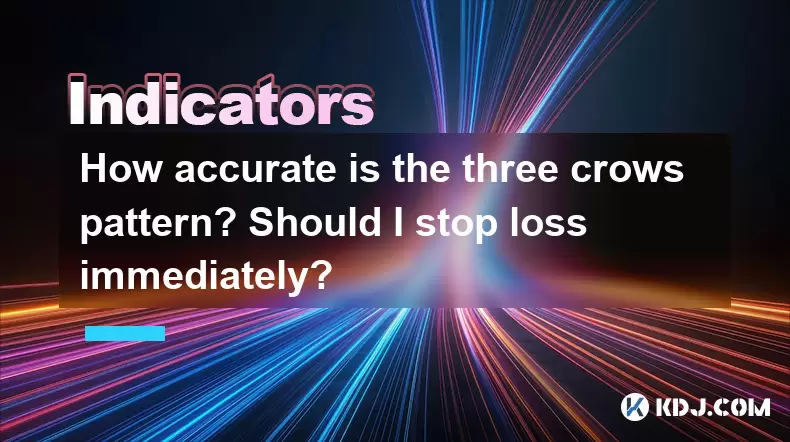
Understanding the Three Crows Pattern in Cryptocurrency Trading
The three crows pattern is a well-known candlestick formation that signals a potential bearish reversal. In the context of cryptocurrency trading, this pattern typically appears after an uptrend and consists of three consecutive long red (or bearish) candles with lower lows and lower highs. Each candle opens within the body of the previous candle and closes near its low, indicating increasing selling pressure.
In crypto markets, where volatility is high and sentiment shifts rapidly, recognizing such patterns can be crucial. However, the accuracy of the three crows pattern varies depending on market conditions, volume, and other technical indicators. Traders should not rely solely on this pattern but instead combine it with additional tools for confirmation.
How Reliable Is the Three Crows Pattern in Crypto?
While the three crows pattern has historical relevance in traditional markets, its effectiveness in cryptocurrency trading depends heavily on context. Here are some factors to consider:
- Market Trend: The pattern is more reliable when it occurs at the end of a strong uptrend.
- Volume Confirmation: A significant increase in volume during the formation of the third crow strengthens the bearish signal.
- Timeframe Sensitivity: Higher timeframes (like 4-hour or daily charts) tend to produce more accurate signals compared to shorter ones.
- Support and Resistance Levels: If the pattern forms near a key resistance level, the likelihood of a reversal increases.
Despite these considerations, no candlestick pattern guarantees 100% accuracy. The three crows pattern should be used alongside other confirmations, such as moving averages, RSI divergence, or Fibonacci retracement levels.
Should I Place a Stop Loss Immediately After Spotting the Pattern?
Deciding whether to place a stop loss immediately after identifying the three crows pattern requires careful analysis. While the pattern suggests a bearish reversal, entering a short position without proper risk management can lead to losses if the trend doesn’t materialize.
Here are steps traders may follow:
- Confirm the Pattern: Ensure all criteria of the three crows are met — three red candles, each opening within the prior candle’s range and closing near its low.
- Check Volume: Look for rising volume during the formation to validate the strength of sellers.
- Use Technical Indicators: Consider using the Relative Strength Index (RSI) or Moving Average Convergence Divergence (MACD) to confirm overbought conditions or momentum shifts.
- Wait for Price Action: Instead of placing a stop loss immediately, wait for a breakdown below a key support level or a bearish candle close before initiating a trade.
Placing a stop loss too early can result in being stopped out prematurely, especially in volatile crypto markets. It's often better to enter after confirmation and set a stop loss above the high of the first bearish candle.
Where Should I Set My Stop Loss When Trading the Three Crows?
Setting an appropriate stop loss is critical when trading the three crows pattern. Here’s how to determine optimal placement:
- Above the First Crow: Placing the stop loss just above the high of the first red candle helps protect against false reversals.
- Fibonacci Extension Levels: Use Fibonacci extensions from the recent swing to identify logical stop loss zones.
- Volatility-Based Stops: Calculate the average true range (ATR) and set the stop loss based on volatility to avoid premature exits.
Risk management plays a vital role here. The stop loss should align with your risk-to-reward ratio, ideally keeping risk per trade below 2% of your portfolio. Avoid setting stops too tight, which can trigger unnecessary liquidations in fast-moving crypto markets.
What Are Common Mistakes Traders Make With This Pattern?
Many traders misinterpret or misuse the three crows pattern due to common errors:
- Ignoring Market Context: Applying the pattern in ranging or sideways markets where it holds little predictive value.
- Overtrading the Signal: Entering trades based solely on the pattern without confirming indicators or volume.
- Poor Risk Management: Failing to adjust stop loss levels according to volatility or chart structure.
- Neglecting Timeframes: Using the pattern on very short timeframes like 5-minute charts, where false signals are frequent.
To avoid these pitfalls, always evaluate the broader market environment and use multi-timeframe analysis. For example, look for confluence between daily and 4-hour charts before making decisions.
FAQ: Frequently Asked Questions About the Three Crows Pattern
Q: Can the three crows pattern appear in bullish form?
A: No, the three crows pattern is inherently bearish. There is a similar bullish counterpart called the "three soldiers" pattern, which indicates a potential bullish reversal.
Q: Does the three crows pattern work on all cryptocurrencies?
A: Yes, the pattern can appear on any cryptocurrency chart, but its reliability improves on major coins like Bitcoin and Ethereum, where liquidity and volume are higher.
Q: How long does the bearish reversal last after the three crows pattern completes?
A: The duration varies. Some reversals last only a few hours, while others can extend over days, depending on the strength of the trend and supporting fundamentals.
Q: Is it possible to automate trading strategies around the three crows pattern?
A: Yes, many algorithmic traders incorporate candlestick pattern recognition into their systems. However, automation requires robust backtesting and integration with other filters to reduce false signals.
Disclaimer:info@kdj.com
The information provided is not trading advice. kdj.com does not assume any responsibility for any investments made based on the information provided in this article. Cryptocurrencies are highly volatile and it is highly recommended that you invest with caution after thorough research!
If you believe that the content used on this website infringes your copyright, please contact us immediately (info@kdj.com) and we will delete it promptly.
- BAY Miner & XY Miners: Unlock Daily Earnings with BTC, DOGE, and LTC Cloud Mining
- 2025-06-20 10:25:12
- Decoding the Aaluxx Myth: Maya Protocol and the Smart Economy
- 2025-06-20 10:30:12
- Binance Wallet, Exclusive Token, Launch: What You Need to Know
- 2025-06-20 10:45:12
- Semler Scientific's Bitcoin Bet: Bold Move or Risky Gamble?
- 2025-06-20 10:50:12
- SHIB Eyes on Whale Activity and Shibarium Upgrade: Will It Trigger a Reversal?
- 2025-06-20 10:50:12
- Crypto Bull Run Expert Prediction: Navigating the Generational Surge
- 2025-06-20 08:25:12
Related knowledge
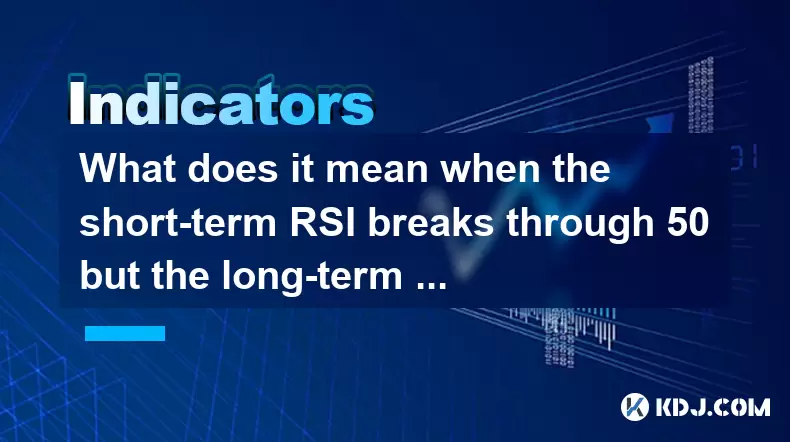
What does it mean when the short-term RSI breaks through 50 but the long-term RSI does not move in the RSI indicator?
Jun 20,2025 at 10:42am
Understanding the RSI Indicator and Its Dual-Term ApplicationThe Relative Strength Index (RSI) is a widely used momentum oscillator in technical analysis, primarily for identifying overbought or oversold conditions in an asset’s price movement. It typically operates on a scale from 0 to 100, with levels above 70 considered overbought and below 30 consid...
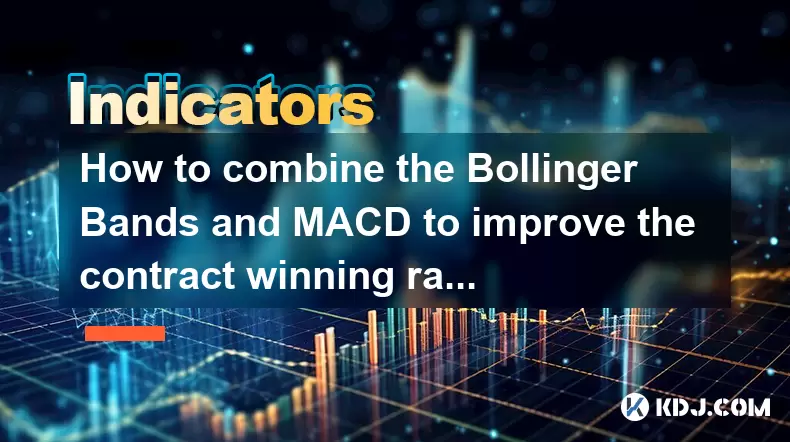
How to combine the Bollinger Bands and MACD to improve the contract winning rate?
Jun 19,2025 at 06:35pm
Understanding Bollinger Bands and MACD IndicatorsTo effectively combine Bollinger Bands and the MACD (Moving Average Convergence Divergence), it's essential to first understand what each indicator represents. Bollinger Bands consist of a middle moving average line and two outer bands that adjust based on market volatility. When prices move toward the up...
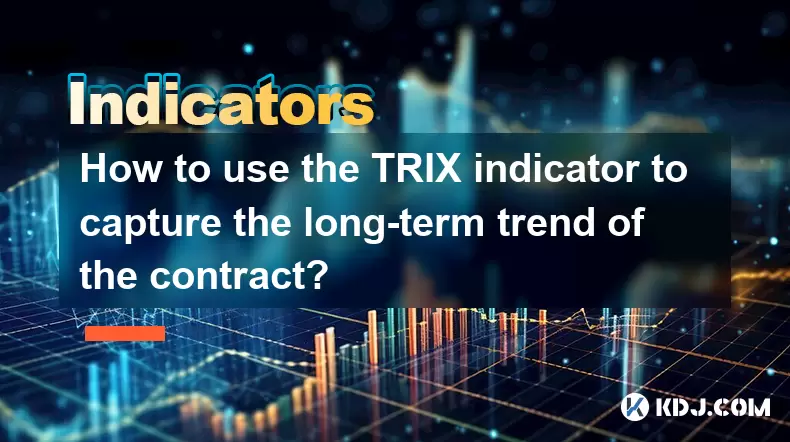
How to use the TRIX indicator to capture the long-term trend of the contract?
Jun 20,2025 at 09:14am
What Is the TRIX Indicator?The TRIX (Triple Exponential Average) indicator is a momentum oscillator used to identify oversold and overbought conditions, as well as potential trend reversals in financial markets. It is calculated by applying a triple exponential moving average to price data and then taking the percentage rate of change of that smoothed v...

How does the long lower shadow of the K line indicate the formation of the bottom of the contract?
Jun 19,2025 at 05:00am
Understanding the Long Lower Shadow in K-Line AnalysisIn cryptocurrency trading, K-line analysis plays a pivotal role in determining market sentiment and potential price reversals. A long lower shadow, also known as a long wick, is one of the most telling candlestick patterns that traders look for when assessing whether a bottom might be forming in a co...
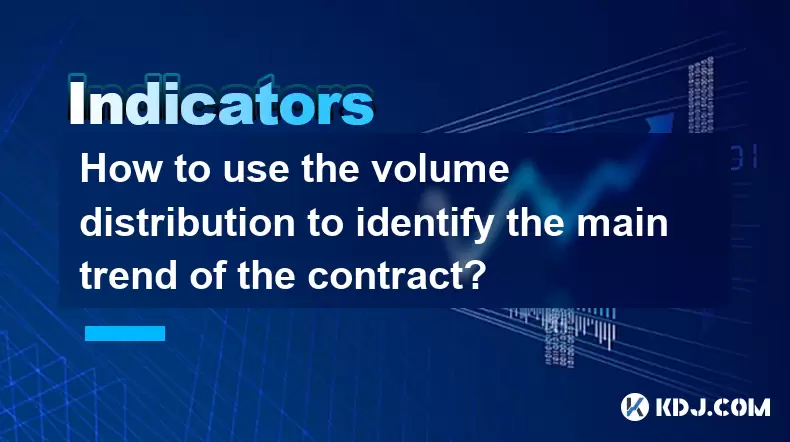
How to use the volume distribution to identify the main trend of the contract?
Jun 20,2025 at 03:56am
Understanding Volume Distribution in Cryptocurrency ContractsIn the realm of cryptocurrency trading, particularly within futures and perpetual contracts, volume distribution plays a pivotal role in deciphering market sentiment. Unlike spot markets, contract trading involves leveraged positions that can amplify both gains and losses. To navigate this com...
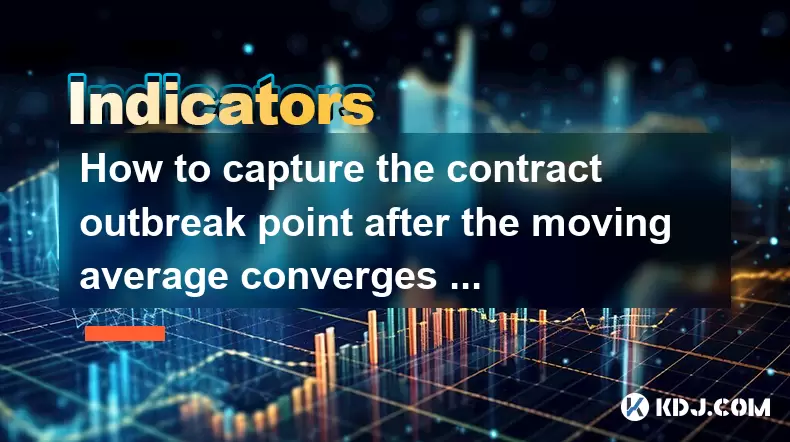
How to capture the contract outbreak point after the moving average converges and diverges?
Jun 19,2025 at 02:07pm
Understanding Moving Average Convergence and Divergence in Crypto TradingIn cryptocurrency trading, moving averages are among the most widely used technical indicators. The concept of convergence and divergence refers to how different moving averages align or separate over time. When short-term and long-term moving averages come together (converge), it ...

What does it mean when the short-term RSI breaks through 50 but the long-term RSI does not move in the RSI indicator?
Jun 20,2025 at 10:42am
Understanding the RSI Indicator and Its Dual-Term ApplicationThe Relative Strength Index (RSI) is a widely used momentum oscillator in technical analysis, primarily for identifying overbought or oversold conditions in an asset’s price movement. It typically operates on a scale from 0 to 100, with levels above 70 considered overbought and below 30 consid...

How to combine the Bollinger Bands and MACD to improve the contract winning rate?
Jun 19,2025 at 06:35pm
Understanding Bollinger Bands and MACD IndicatorsTo effectively combine Bollinger Bands and the MACD (Moving Average Convergence Divergence), it's essential to first understand what each indicator represents. Bollinger Bands consist of a middle moving average line and two outer bands that adjust based on market volatility. When prices move toward the up...

How to use the TRIX indicator to capture the long-term trend of the contract?
Jun 20,2025 at 09:14am
What Is the TRIX Indicator?The TRIX (Triple Exponential Average) indicator is a momentum oscillator used to identify oversold and overbought conditions, as well as potential trend reversals in financial markets. It is calculated by applying a triple exponential moving average to price data and then taking the percentage rate of change of that smoothed v...

How does the long lower shadow of the K line indicate the formation of the bottom of the contract?
Jun 19,2025 at 05:00am
Understanding the Long Lower Shadow in K-Line AnalysisIn cryptocurrency trading, K-line analysis plays a pivotal role in determining market sentiment and potential price reversals. A long lower shadow, also known as a long wick, is one of the most telling candlestick patterns that traders look for when assessing whether a bottom might be forming in a co...

How to use the volume distribution to identify the main trend of the contract?
Jun 20,2025 at 03:56am
Understanding Volume Distribution in Cryptocurrency ContractsIn the realm of cryptocurrency trading, particularly within futures and perpetual contracts, volume distribution plays a pivotal role in deciphering market sentiment. Unlike spot markets, contract trading involves leveraged positions that can amplify both gains and losses. To navigate this com...

How to capture the contract outbreak point after the moving average converges and diverges?
Jun 19,2025 at 02:07pm
Understanding Moving Average Convergence and Divergence in Crypto TradingIn cryptocurrency trading, moving averages are among the most widely used technical indicators. The concept of convergence and divergence refers to how different moving averages align or separate over time. When short-term and long-term moving averages come together (converge), it ...
See all articles

























































































